Ryan Hall's Blog, page 293
February 4, 2016
Trail of the Week: Trans Catalina Trail, California

Photo: Payton Chung under CC BY - SA
Our Trail of the Week feature is made possible through a partnership with Trail Run Project, a crowd-sourced collaboration by and for the running community. Thanks to Spencer Campbell of the Catalina Island Conservancy for mapping and describing this route.
Catalina Island, located about 20 miles off the Southern California coast near Los Angeles, is a popular tourist attraction. Though most stay around Avalon, the lone city on Catalina, getting out into the island’s backcountry is an unforgettable experience. The trails on Catalina allow for a full tour of the island to be quite the running adventure.
The Trans-Catalina Trail stretches from the Renton Mine Trailhead on the east end to Starlight Beach on the west end. It winds up hills and down valleys offering spectacular views across the 43,000-acre Nature Preserve of the Catalina Island Conservancy. Runners can enjoy the full length of the trail. You may run a single leg of the trail or tackle it in it’s entirety over multiple days. Camping is available at certain points of the trail. Catalina Island Conservancy members receive a 50 percent discount on camping fees at Black Jack, Little Harbor, and Parson’s Landing campgrounds.
Among the sights you will see:
Catalina Island has at least 61 endemic species and subspecies, including eight plants, five mammals, three birds, and 45 invertebrates.
Keep an eye out for the Catalina Island Fox and Bald Eagles.
Rattlesnakes are native to the island. Depending on the temperature, they may reside under or on top of warm rocks, or be found curled up by the side of the road. Avoid them.
Bison can be encountered on all parts of the trail east of the Isthmus. If you encounter bison, move slowly and steadily around them, keeping at least 150 feet away.
The Data
Miles: 38.4
Runnable: 83 percent
Average Grade: 8 percent
Max Grade: 33 percent
Total Ascent: 7,638 feet
Total Descent: -7,932 feet
Highest Elevation: 1,737 feet
For a closer look, check out the interactive map, data, photos and virtual run simulator courtesy of Trail Run Project:
The post Trail of the Week: Trans Catalina Trail, California appeared first on Competitor.com.
Letter Reveals Chinese State-Sponsored Doping Program In 1990s

Wang Junxia went on a world-record tear in 1993. Two of those marks—3,000m and 10,000m—still stand today. Photo: IAAF.org
Russia wasn’t the only country with a state-sponsored athletics doping program, the South China Morning Post reported on Thursday. Athletes from China, specifically those who were members of “Ma’s Army” under coach Ma Junwen—a group which included world-record holder and Olympic medalist Wang Junxia—were forced to take large doses of illegal drugs, according to a never-before-seen letter written by Junxia and her teammates to a Chinese journalist Zhao Yu.
“For many years, [he] forced us to take a large dose of illegal drugs. It was true,” one of the athletes wrote in the letter, which has remained unpublished for 19 years.
Several of Junwen’s athletes set world records during the 1990s, but it was Junxia stood out. In 1993, Junxia went on a tear, setting her personal best of 2:24:07 in the marathon and winning the world title in the 10,000m—the latter capping off a Chinese sweep of the distance events at the world championships in Stuttgart. Most impressive, however, were her performances at the Chinese National Games in September. Junxia took silver in the 1500m behind training partner Qu Yunxia—3:50.46 to 3:51.92—with both marks breaking the previous world record. Later in those games, Junxia ran a world-record of 8:06.11 in the 3,000m and 29:31.78 in the 10,000m, taking a mind-blowing 42 seconds off Norwegian Ingrid Kristiansen’s previous mark. Both of those records still stand today. Wang, who was coached by Junwen until 1995, won gold in the 5,000m at the 1996 Olympics in Atlanta.
According to the South China Morning Post, the IAAF—which inducted Junxia to its Hall of Fame for her achievements during the 1993 season—is investigating the authenticity of the letter before deciding to take action. If the letter is verified and Junxia admits to wrongdoing, she could have results, records and medals taken away from her, along with potential financial penalties, per World Anti-Doping Agency rules.
“Our feelings are sorry and complex when exposing his (Ma’s) deeds,” the letter continued. “We are also worried that we would harm our country’s fame and reduce the worth of the gold medals we have worked very hard to get.”
RELATED: WADA Reports Reveals Widespread Russian Doping
The post Letter Reveals Chinese State-Sponsored Doping Program In 1990s appeared first on Competitor.com.
The Comeback Kid: Luke Puskedra Becomes a Top U.S. Olympic Trials Contender
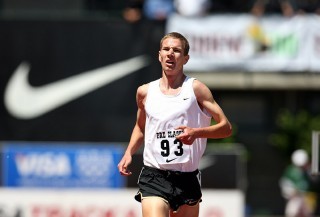
Puskedra had some success on the track, but the past year has proven his real opportunity lies on the roads as a half-marathon and marathon runner. Photo: Photorun.net
After quitting elite running in search of an average, regular life, Luke Puskedra slowly found his way back into the sport. Now he’s one of the best marathoners in the U.S. and a top contender for the U.S. Olympic Trials Marathon on Feb. 13 in Los Angeles.
Many times, with a baby on the way, Luke Puskedra tried to settle into his role as a working man.
He bought a car, and he thought he could be a salesman. He bought a house, and he thought he could become a real estate agent. After a contractor did some work on the home, he thought maybe he could work in construction.
Every time, his wife, Trudie, disagreed. She knew that Luke, deep down, was a runner. But because this was after his disastrous first marathon in 2014, and before last October’s breakthrough in Chicago, when, as an unsponsored runner, he finished fifth and ran the fastest American time since Meb Keflezighi’s 2:08:37 in Boston in 2014, Luke disagreed with her. He was no runner. He was sick of running.
Yet Puskedra had been a runner his whole life. He discovered it in third-grade gym class, growing up in Ogden, Utah; the following year, his father drove him to Junior Olympic meets. He became a high school standout and a star recruit at the University of Oregon, where he earned numerous All-American honors and placed fourth in the 10,000-meter run at his final NCAA championships in 2012.
When he ran 1:01:36 in his first half marathon later that year, many thought he could be a professional star, too. In 2013, Alberto Salazar invited him to the Portland-based Nike Oregon Project to train alongside some of the world’s top runners.
When the time came to prepare for the New York City Marathon in 2014, Puskedra traveled to Salazar’s camp, by himself, and he ran 160 miles a week. Many, including Salazar, were amazed by Puskedra’s talent, but Puskedra saw himself as a grinder. He admired the casual approach of, say, Olympic silver medalist Galen Rupp, but he couldn’t match it. Puskedra thought he had to outwork everyone else. Occasionally, he ran until he was sick.
Running, though, is one of the few sports that doesn’t always offer more rewards for working harder. Illnesses are a common sign of overtraining, and Puskedra also had other symptoms of it. Standing at the start line on Staten Island, he knew he wasn’t right.
It was cold and windy, and he felt sluggish, with wooden legs. He watched the lead pack go first, and then the second pack, and then, the most punishing irony of all happened. He began to get passed by elite weekend warriors, the guys who had lives, families and careers—all the things he thought he had to sacrifice for running. He ran 2:28:54, a deplorable result for a runner of his pedigree and career bests.
* * *
Puskedra didn’t want to get married right away—even though he met Trudie, a tennis player, at Oregon and loved her—and he didn’t want kids, either, all because of running. Running seemed to take the fun out of everything, or at least skew the perspective of everything else in his life.
In fourth grade he felt obligated to run well because he didn’t want to waste his Dad’s time driving him all over the country to Junior Olympic races, even though his dad just seemed to enjoy the races and didn’t care about the results. When he was in seventh grade he saw his future, and by the time he got to Oregon, he enjoyed competing, but he didn’t enjoy training.
After the disappointing race in New York, during a little break, he ate all the foods he couldn’t eat before, and he didn’t stop. His time off stretched into two months and included four-week trip to South Africa with Trudie to visit with her family.
He just wanted to be a normal person. He wanted to have a wife, a child and a job that he didn’t need to obsess over. When he moved away from Salazar’s camp and back to Eugene, where he’d had his successful college career, he did it for Trudie’s opportunity to become a tennis pro with her old college coach at a club.
When he was back, however, he kept getting texts from Andy Powell, his old coach, who invited him out to run with the guys. Oregon, Powell reminded Puskedra, was a family, not just a program. And every time Luke would ask Trudie if he could go, she always said yes. If you want to run, you should run, she said.
“As a man, it’s hard to swallow that your wife is working and you’re not really doing much,” Puskedra says. “But she never gave me the easy out. She never let me off the hook and said I couldn’t run.”
She never let him settle for being a regular dude. Instead, she gave him the time to rediscover that he was a runner.
RELATED: U.S. Olympic Trials Marathon Will Be Televised Live on NBC
The post The Comeback Kid: Luke Puskedra Becomes a Top U.S. Olympic Trials Contender appeared first on Competitor.com.
Jake Gyllenhaal to Star In and Produce Boston Marathon Bombing Movie

Photo: Shutterstock.com
Bold Films is officially producing and financing a film with Jake Gyllenhaal about the Boston Marathon bombings in 2013, according to The Hollywood Reporter.
Gyllenhaal will not only be starring as the lead role in the drama, but will also join Bold in becoming one of the film’s producers. The film titled Stronger will also be the acclaimed actor’s first project to be released under Nine Stories, a production company Gyllenhaal co-runs with Riva Marker.
“Riva and I started Nine Stories just a few months ago to support and create projects like Stronger,” Gyllenhaal said in a statement to The Hollywood Reporter. “We are extraordinarily excited to bring this inspiring story of love and the human spirit to the big screen.”
Stronger is an adaptation of a book written by Jeff Bauman, a survivor who lost both his legs while waiting for his girlfriend at the finish line when the two bombs went off, killing three people and injuring hundreds.
Gyllenhaal will play Bauman with co-star Tatiana Maslany from Orphan Black as his girlfriend, and David Gordon Green will be directing the film which is set for a production start date of April 4.
Stronger is one of three films centered around the Boston Marathon bombings currently in the works, including Mark Wahlberg’s Patriots’ Day.
The post Jake Gyllenhaal to Star In and Produce Boston Marathon Bombing Movie appeared first on Competitor.com.
Shoe of the Week: Skechers Performance GoRun Forza
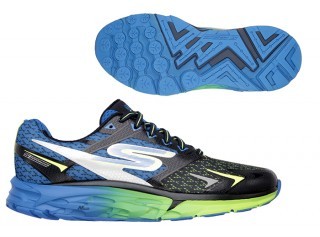
The GoRun Forza is the first stability shoe from the Skechers Performance brand.
Some runners need support from their shoes, especially on longer runs when their legs and form start to fatigue. Although Skechers entered into the performance running category with lightweight, low-to-the-ground neutral shoes, it’s now venturing into models with more stability-enhancing structure. The Forza is a well-balanced high-mileage stability trainer with a modern rendition of a medial post (it’s an integrated design that spans the heel to the metatarsal heads), a responsive two-layer foam package, a sleek, seamless upper and a slightly wider footprint. It’s a super sturdy shoe, but all of that stability and support is hidden in a comfortable, smooth-riding cruiser with a touch of responsiveness. You can feel the support, but it’s not oppressive or gait-altering and clunky as it sometimes is with other shoes in this category. It’s certainly a stark contrast to most of the previous shoes Skechers has released in the past five years (including the GoRun Strada), but it will be appreciated by runners who want more support under their feet. (And that includes two-time Olympian Kara Goucher, who trains in this shoe and played a role in designing it.)
The GoRun Forza has a plush interior that securely wraps the midfoot/arch and locks down the heel (with an internal heel counter) but still offers a bit of wiggle room in the toe box. The stitchless upper is made from a combination of stretchy mesh material reinforced with welded-on flexible thermoplastic polyurethane overlays. The wide cushy tongue works in concert with the shoe’s flat laces and adds to the snug fit and feel. Although the supportive ride is completely unique to the Skechers line, the shoe’s fit and interior share some similarities to the GoRun Ultra Road. (Our testers preferred the mesh upper in the GoRun Forza because it flexes and moves with a foot much better than the woven mesh of the GoRun Ultra Road.)
Our wear-testers lauded this shoe as a reliable high-mileage and long-distance trainer or a shoe that could be used for moderate racing paces in the 10K to the marathon. It’s not overly energetic, but it is lively enough for tempo runs and progression runs. “This an ideal workhorse shoe for a half-marathoner or marathoner for a runner who needs and wants to feel support under their feet,” says wear-tester John Byrne.
VIDEO: Shoe Talk—Skechers GoRun Forza
Price: $120
Weights: 10.8 oz. (men’s 9); 8.2 oz. (women’s 7)
Heel-toe offsets: 8mm; 30mm (heel), 22mm (forefoot)
Info: Skechers.com
RELATED: Shoe of the Week—Brooks Ravenna 7
The post Shoe of the Week: Skechers Performance GoRun Forza appeared first on Competitor.com.
February 3, 2016
Treadmill Running: What’s Grade Got To Do With It?
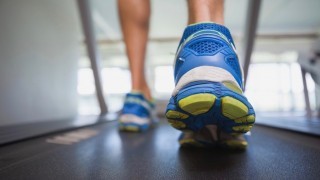
Photo: Shutterstock.com
In researching treadmill running, I’ve come across three items where there has been an attempt at quantifying what an effort is based on the treadmill speed and grade. The first was simple: For every 1 percent increase in grade, your effort was equal to 0.2 mph higher on the speed. So, for instance, if you were running at 8 mph and 1 percent grade, it would be equal to running at 8.2 mph at a zero percent grade. Pretty simple, and if I knew how this conclusion was reached, the more likely I would be to believe it.
The second is a very popular chart from the website HillRunner.com. I had actually referred a number of my athletes to this chart. However, the more I looked into it, the more I pondered how accurate it was, especially at faster speeds. After trying it out for a workout of my own, the more I thought that there was no way that I needed to put the grade that high to hit these paces. Again, I wish there was an explanation behind the theory that would help me better understand it.
Finally, there’s always Jack Daniels, the solution to any situation that calls for data or a strong drink. (Yes, that was a very bad joke. How many times do you think he’s heard that in his 82 years of life?) Anyway, I actually opened up a book and took a look at his charts. Now, I immediately noticed the following:
1. How much faster the equivalencies were compared to the Hill Runner charts
2. That he incorporated VO2 into the charts. (For your reference, this is tables 4.5 and 4.6 of the latest edition of Daniels’ Running Formula).
Why is this important? Because at any given speed and grade, we can calculate the VO2 cost, or how much oxygen is required to run at that speed and/or grade. So, after calculating the VO2 cost of a certain pace with no grade, you can then correlate and adjust the variables (speed and grade) to find what equal work is for whatever variables you plug in. Here’s what I mean:
The following is a formula for running from the American College of Sports Medicine:
VO2 (mL . kg-1 . min-1) = (0.2 . S) + (0.9 . S . G) + 3.5 mL. kg-1.min-1
S= speed in meters per minute
G = grade, expressed as a fraction
Without getting too technical, you can start by calculating what the VO2 cost is for any flat run by taking the mph and converting it to meters per minute (1 mph = 26.82240 m/min) and tossing that in for S. Then just replace G with a zero and run the numbers. You could then find the VO2 cost for the pace you’d like to hit by then either figuring out the actual speed you want to run (solving for G) or solve for S by putting in the max grade you want to run. The result is a good indicator of what kind of effort you are putting in on the treadmill, given your pace and incline.
So is this exact? Probably not. The only way it would truly be completely accurate is hooking yourself up to a metabolic cart for every run, and that’s no fun. However, if you are just trying to get the work in, this is a great way to be pretty darn close to where you need to be for the workout.
Going back to Daniels, I found a messageboard thread in which he contributed, stating that he looked at Boston Marathon splits and also did another study in which he found the ratio to be 12-15 seconds slower per 1 percent grade incline. One caveat here that wasn’t made crystal clear—it appeared he was talking about some pretty quick runners, because he referenced overground running of 5:00-6:00 minute-per-mile pace. I also found another reference from Tim Noakes, author of Lore of Running, that gave a number of 2.6 ml/kg/min (amount of oxygen) increase per 1 percent increase in grade. This then translated into a reduction in speed of around 0.65 kilometers per hour. So, comparing the numbers, Daniels and Noakes match up pretty well.
So, the natural turning point of this discussion turns to the question: “Do I need to run at an incline to compensate for the lack of a self-created headwind?” I have gone back and forth on this question. If you look at the chart from Hill Runner, it’s pretty clear that a 1 percent incline should be used but again, I don’t know where they got those calculations. Daniels’ chart is based on VO2, so it isn’t particularly necessary. However, he did write in the later pages that essentially a 2-percent grade makes up for the fact that you aren’t creating a headwind. So, you might think that adding an incline is absolutely necessary, but I don’t know if that’s the case. The reason is that if you aren’t creating a headwind on the hamster wheel, your ability to cool yourself off is then limited. The result is a slightly higher work rate, represented by a higher exercising heart rate. Now, if you cool yourself off with a fan, then you’ll probably need to adjust the grade to compensate for the increased cooling. Otherwise, I don’t know if a 2-percent grade increase is necessary. I have a feeling that it all ends up being a wash!
The other caveat here is that Daniels’ entire conversation was based around faster-paced running. Noakes also made comments about a speed of 18K/hour (5:24/mi pace) being the sort of a threshold where the headwind was a major factor. Mainly, the point of all this is that the faster you are, the more likely you will be to have to add an incline to match what your overground efforts.
RELATED: 3 Kickass Treadmill Workouts To Get You Through Winter
Key Takeaways:
You can replicate much faster workloads by adjusting your grade and keeping the pace manageable.
For easy runs across the pace spectrum, adding a grade will offset the lack of a self-created headwind. A complete generalization would be 0.5 percent for 8:00/mi pace and slower, 1 percent for 6:30-7:30/mi pace, 1.5-2 percent for paces faster than 6:00/mi pace. However, most people will not be approaching those paces for easy runs.
For faster workouts, just use the speed/grade combo that you are looking for and just don’t worry about the wind effect—your head might explode.
Experiment with which combo works better for you. Some people will thrive better with higher grades and lower speeds, while others will do better with the opposite settings. Personally, I like a fairly moderate speed with a moderate grade. I would try to keep the grade under 7 percent as then your form can start to change due to the incline.
In Closing:
To close this out, there are options out there. Whether you are trying to simulate a hilly race course or just trying to find a way to get your faster Hansons Marathon Method work in, you can do it. The big component for me is that you can adjust these variables and still feel confident that you are getting the right effort in on the right days. If you liked the way I laid out how I would calculate effort based on speed and grade combos, you’re in luck! We’ve made a handy calculator based on the Noakes and Daniels references to help you dial in that work effort. You can sign up for the download on our website.
Luke Humphrey is the author of Hansons Marathon Method (Velopress) and head coach of Hansons Coaching Services. This post originally appeared here and was republished with permission.
The post Treadmill Running: What’s Grade Got To Do With It? appeared first on Competitor.com.
Workout Of The Week: Fast Finish

A controlled fast finish will not leave you wasted for the next day’s workout. Photo: Shutterstock.com
Most runners seldom or never do the neatly structured workouts presented in this series. Instead they jog. Even serious competitive runners jog most of the time. They may run tempo on Tuesday and hills on Friday, or intervals on Wednesday and fartlek on Saturday, but the rest of the time they’re jogging.
What is jogging? Usually it entails running a predetermined distance or duration at a steady, moderate pace. That pace is usually selected by feel. I believe that the “natural pace” runners fall into when jogging represents a compromise between the competing desires to feel comfortable during the run and to complete the run as quickly as possible. The product of this compromise is an effort that is neither easy nor hard.
The typical jog is not really done at a metronomically steady pace from start to finish, however. More often than not, the runner picks up the pace spontaneously toward the end. This is the classic phenomenon of the horse smelling the barn. What’s interesting about what I will henceforth refer to as the “fast finish” is that it usually does not feel any harder than the slower running preceding it, and not infrequently it actually feels better. How is this possible?
I’ll tell you how. Perceived exertion during exercise is determined not only by physiology (e.g. how fast your heart is beating), as is commonly assumed, but also by information received consciously. For example, it’s likely that you will feel better at a given level of fatigue when you are within sight of a race finish line than when you are just passing the halfway mark. The physiology is the same, but the information is different, so you feel different.
This is not just a speculation on my part, but has been proven scientifically. In my book, RUN: The Mind-Body Method of Running by Feel, I talk about a study conducted at the University of Cape Town, South Africa in which runners reported their subjective rating of perceived exertion (RPE) once each minute throughout a series of moderate-intensity treadmill runs. In one of these runs, they were told to run for 10 minutes, but at the end of 10 minutes they were told to run for another 10 minutes. There was a sudden spike in RPE in the 11th minute of this test. That is, when the runners’ expectations for the difficulty of the workout were thwarted, it suddenly felt more difficult. In the second run, the runners were told to run for 20 minutes at the same intensity. There was no spike in effort at any point in this second run, although it was in fact structurally identical to the first run. The only difference was that this second workout conformed to their expectations. The mere fact that the identical first workout was harder than expected made it actually harder.
So perception of effort is a matter of choice, to some degree, and that’s why runners tend to pick up the pace at the end of a jog. In the first half or three quarters of the run your brain will use perception of effort to discourage you from running too fast, to conserve energy and limit the stress of the workout. But once you pass the post office or the one-mile-to-go mark, your brain consciously registers that you’ve essentially made it home and there’s no harm in loosening the reigns and letting the horses run a bit. So you accelerate, and not only that, but you feel good doing it.
Many running experts discourage the fast finish because they don’t appreciate the role of the brain in regulating exercise performance. They believe every run should have a strict physiological rationale and that the runner should stick to that rationale from start to finish. They see the fast finish as a reckless breach of format that subjects the body to unnecessary stress.
I disagree. Your subconscious is smart. It wouldn’t make you feel like finishing fast if it was really a bad thing. The very reason your brain gives you the urge to finish fast is that it has calculated you can do so without undue strain. Forget what your heart rate monitor says. The fact that you feel good running fast from the post office to the end of your driveway is all the evidence you need that this little injection of play into your training is in fact good for you.
I think you should go ahead and allow yourself to finish fast whenever you feel like it. Start the acceleration whenever the urge strikes, whether it’s just after the turnaround point of an out-and-back or when you turn onto your block, and run at whatever pace feels right from there. Don’t go to the well—leave that for your tempos, hills, and intervals—just put out an effort that feels exhilaratingly challenging. A controlled fast finish will not leave you wasted for the next day’s structured high-intensity workout, and a habit of indulging in controlled fast finishes whenever you please will make you a little fitter over time by adding a bit of extra work—and fun—into your training.
****
About The Author:
Matt Fitzgerald is the author of numerous books, including How Bad Do You Want? (VeloPress, 2015). To learn more about Matt, visit www.mattfitzgerald.org.
The post Workout Of The Week: Fast Finish appeared first on Competitor.com.
Is Intermittent Fasting Good for Runners?
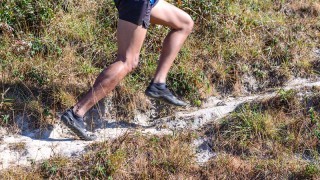
Intermittent fasting is the practice of restricting calories on one or more days of the week or going without eating for slightly longer than normal periods of time within the day. It has gained some popularity among dieters and bodybuilders seeking to shed body fat, and a growing number of runners (especially ultrarunners) do it to increase the fat-burning capacity of their muscles, which, in theory, increases endurance.
Runners often ask me for my take on intermittent fasting. Although some research suggests that it can be an effective way to lose weight, and although some runners swear by it, I discourage the practice. Here are my four reasons advising runners to give intermittent fasting a pass.
There are simpler ways to lose weight.
In a recent review of past research comparing the effects of intermittent fasting and continuous calorie restriction, Australian scientists concluded, “Intermittent fasting…represents a valid—albeit apparently not superior—option to continuous energy restriction for weight loss.”
In other words, intermittent fasting works as well as, but no better than, the traditional weight-loss method of eating a little less each and every day. But if intermittent fasting doesn’t work better than continuous calorie restriction, it is more complicated. One version of intermittent fasting entails choosing two days of the week on which to eat lightly (500 to 600 calories) and eating normally the other days. Another version entails choosing two days of the week on which to eat normally and fasting for 16 out of 24 hours on the other five days.
That’s a lot of numbers and planning and switching back and forth. Why not just consistently avoid overeating every day if the results are likely to be the same?
Fat burning is overrated.
Scientists have not rigorously investigated whether intermittent fasting significantly increases the ability of the muscles to use fat as fuel during exercise. But even if it does, this physiological effect is unlikely to translate to better running performance. Research involving low-carb diets—a more popular way of increasing fat-burning capacity that is proven to work—has shown that this method fails to increase performance in multi-hour endurance events and actually impairs performance in events lasting less than about 90 minutes. So there’s no reason to expect that intermittent fasting would do any better.
The most relevant study conducted to date was one that looked at the effects of Ramadan fasting on time trial performance in middle-distance runners. During the month of Ramadan, Muslims fast between sunrise and sundown, a schedule that is similar to that of many runners who practice intermittent fasting. On average, the subjects’ 5000-meter performance dropped by 5 percent between the beginning and the end of that month intermittent fasting.
It encourages a magic-bullet mentality.
In my work as a sports nutritionist, I have found that some athletes have a magic-bullet mentality. They are always looking for some revolutionary new dietary method to give them the results that they have so far failed to achieve. But I believe it is this very mentality that prevents such athletes from getting the results they seek.
There is simply no need for revolutionary new dietary methods. The nutritional practices that really work—eating a balanced, varied, and inclusive diet, for example—have existed forever. These tried-and-true practices are how the most of the world’s greatest runners—the gold medalists and record breakers—get their results.
Think about it: If intermittent fasting was truly necessary to achieve an optimal body composition and maximum fitness, there would have been no runners with an optimal body composition and maximum fitness until intermittent fasting was invented!
It’s not normal.
I believe strongly in keeping the diet as normal as possible in the pursuit of health and fitness goals. Put another way, I believe in changing one’s existing eating habits as little as necessary to achieve one’s health and fitness goals.
There are a few reasons for this. First, an altered diet is easier to sustain if it retains some familiar and preferred habits and patterns. Second, an altered diet is less disruptive to a person’s social relations if it remains more or less culturally normal. And third, extreme and radical diets of all kinds often serve as stepping stones toward disordered eating for the susceptible.
Now, make no mistake: If your current diet is very bad, you will need to make significant changes in order to achieve your health and fitness goals. If, for example, the only vegetables in your current diet are french fries and ketchup, you are going to have to make room for at least two or three servings of real vegetables every day.
But there is never any need for more severe measures such as eliminating meat and fish from the diet, limiting carbohydrate intake to 100 grams a day or less, or practicing intermittent fasting. Such measures do sometimes work out for some runners, but the odds of success are much greater with the more conventional eating practices favored by most of the best runners in the world.
RELATED: Why You Should Eat Like an Elite Runner
The post Is Intermittent Fasting Good for Runners? appeared first on Competitor.com.
February 2, 2016
Chasing Rio, Part I: Meb’s 2016 Olympic Quest
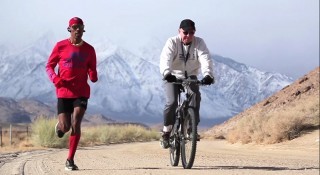
The first episode of “Chasing Rio: Meb’s Road to the 2016 Olympic Trials” presented by the Rock ‘n’ Roll Marathon Series, follows Meb Keflezighi through a day of training in Mammoth Lakes, Calif., with Bob Larsen, his longtime advisor dating back to Meb’s college days at UCLA. We learn Meb’s strategy of training at altitude, and what’s driving him in his quest to make his fourth Olympic team.
Stay tuned for more episodes of “Chasing Rio” leading up to the 2016 U.S. Olympic Trials marathon in Los Angeles on Feb 13.
The post Chasing Rio, Part I: Meb’s 2016 Olympic Quest appeared first on Competitor.com.
How Music Can Boost Your Cadence

This piece first appeared on Triathlete.com.
Want to work on quickening your stride? All you need is a new playlist … and a little rhythm.
To increase your running efficiency and speed, you should develop a consistent metronomic cadence. The higher your turnover rate (steps taken per minute), the less time you spend in the air—which in turn reduces impact and lowers your risk of injury.
Test your current cadence by counting your right foot strikes for 60 seconds during an easy run. Multiply that by two. If you’re right around 180, you’re at an optimal stride rate. If you fall below that average—like most of us—you can work on your cadence using music as a tool.
Former marathon world-record holder Haile Gebrselassie has famously used music (specifically the song “Scatman” by Scatman John) to lock in his optimal stride rate, and research has shown that carefully selected music can actually enhance endurance by 15 percent.
These songs are all close to that sweet spot of 180 beats per minute. Simply match your feet to the beat to teach your body what an optimal cadence feels like. If you’re just starting out it may feel pretty fast, so aim to focus on your stride only during the chorus and then work you way up to full songs.
1. “Wake Me Up Before You Go-Go,” Wham!
2. “The Distance” Cake
3. “Love is a Battlefield,” Pat Benetar
4. “I’m Still Standing,” Elton John
5. “Umbrella,” Rihanna
6. “Dancing with Myself,” Billy Idol
7. “Free Fallin’,” Tom Petty & The Heartbreakers
8. “Give it Away,” Red Hot Chili Peppers
9. “Such Great Heights,” The Postal Service
10. “Footloose,” Kenny Loggins
11. “Son of A Preacher Man,” Dusty Springfield
12. “Everlong,” Foo Fighters
13. “Lose Yourself,” Eminem
14. “Wonderwall,” Oasis
15. “Longest Time,” Billy Joel
RELATED: How Music Helps Runners of All Abilities
The post How Music Can Boost Your Cadence appeared first on Competitor.com.
Ryan Hall's Blog
- Ryan Hall's profile
- 21 followers



